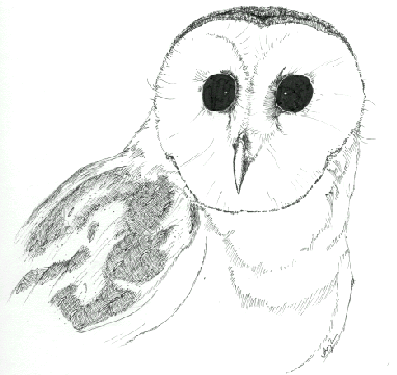Within its range, the Barn Owl searches out open grasslands where it can hunt for its favourite prey, meadow voles and mice. These small rodents usually make up more than 90% of the Barn Owl’s diet, but other small mammals and even birds or insects will be hunted as well. The size of a territory depends on the availability of prey, but is usually 2 to 3 square kilometres. Barn Owls in Canada usually begin breeding when they are just one year old. They often return to the same nest year after year, and start nesting in March or April. The number of eggs produced is usually 5 to 8, but when prey is unusually abundant as many as 12 or 13 eggs may be laid. The female incubates the eggs for about 31 days, and then both adults help to feed the chicks, which remain in the nest for close to nine weeks after hatching. Even after leaving the nest, the young owls remain dependent on their parents until they are three months old. Only 20% of Barn Owls survive to adulthood. Many die from collisions with cars because Barn Owls fly low when hunting. Other causes of death include starvation, predation, and poisoning. Conservation concerns: The Barn Owl was designated as threatened in Ontario in 1984, and as endangered in Canada in 2000. It is also listed as endangered in several US states. Before European settlers arrived in North America, the Barn Owl lived in the hollows of old trees. Over time many of these old trees were cut down, and the Barn Owl adapted by moving into barns and other buildings for shelter. But in the past few decades the number of wooden barns has declined, and many Barn Owls have been left without a home. In addition, much of the grassland habitat which the Barn Owl needs for hunting has been lost. The Barn Owls which have been able to find a place to live are vulnerable if they eat rodents that people have tried to kill with poisons. This is particularly unfortunate, because the Barn Owl can actually help farmers control rodent populations. They have been called "nature’s perfect mousetrap" because Barn Owls have an incredibly large appetite. Even a small family of Barn Owls will eat close to 20 mice per night, and over the course of a year each individual Barn Owl will eat more than 1000 mice. In addition to making sure their food source isn’t poisoned, farmers and other landowners can help the Barn Owl by installing wooden nest boxes for them in sheltered places. |
